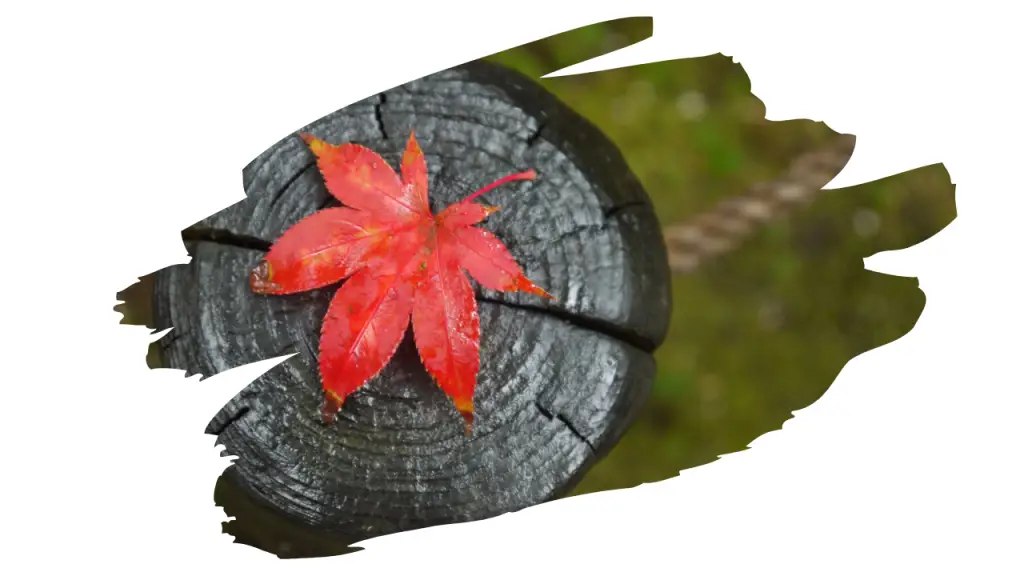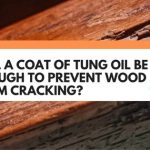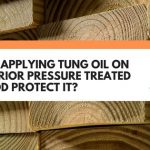We’ve all seen those amazing maple wood dining tables. That’s because this close-grained hardwood is a strong timber that takes on wood stains incredibly well.
Yet, unfortunately, Maple is more vulnerable to decay compared to other types of wood. But, to be clear, it is still a very durable lumber that is officially tougher than oak.
However, if you want maple wood to last, you are going to need to give it a coat of something water-repellent.
So, here is where oil finishes come in handy.
A natural oil finish, (such as Linseed oil or Tung oil), works by soaking into the surface of wood. After they become dry and cure into a hard durable film, they make wood very moisture-resistant.
But, can you apply Tung oil on Maple wood?
Yes, you can apply Tung oil onto Maple wood. It’ll do a decent job of penetrating maples fine straight grain, protecting it both inside and out.
After application, a Tung oil coated maple surface is going to need a touch up every 12 months. Especially as Tung oil isn’t the most durable finish on the market.
And if that table is going to be used as more than just an ornament, then that Tung oil coat will need a sealant top coat too.
But, let’s get into all of that and more below…

This post may contain affiliate links to products that we receive a commission for (at no additional cost to you). Learn more here.
What Is The Best Oil For Maple Wood?
The best type of finishing oil for Maple wood is Tung oil or Linseed oil.
Both finishes, while durable, are still susceptible to water damage (from coaster-less cups and the like). So you will still need to give them an extra top coat of polyurethane, lacquer or shellac to really waterproof that maple.
Related Post: What Is The Difference Between Lacquer and Polyurethane?
What About Danish Oil? Can That Work Too?
Danish oil is a hodge-podge of an oil finish. Far from being a pure and natural oil (like Tung or Raw Linseed), its made from a blend of ingredients.
Those ingredients can include Tung and/or Linseed oil, but a number of synthetic resins get thrown into the mix too.
And so because of this, a coat of Danish oil will darken Maple wood a fair bit. And maple looks best when you apply a clear coat finish too it instead.
So, for appearances sake, skip over Danish oil as a finish for that Maple table.
Related Post: All About Danish Oil: Advantages and Disadvantages
But, Doesn’t Tung Oil Darken Maple Wood?
All oil finishes darken wood as they age. But Tung oil stands out in that it doesn’t darken wood anywhere near as much compared to Linseed oil.
Now, it is worth emphasising here that Pure Tung Oil does not darken lumber.
And it is worth pointing this out due to the fact that a lot of Tung oil products on the market aren’t pure Tung oil. In fact, some don’t even have a drop of Tung oil in them!
So, provided you stick to an all-natural Pure Tung oil product, (products such as Liberon’s Premium Pure Tung Oil), then that finish won’t darken your maple surface.
You can check out the latest prices for this oil finish over on Liberon.com by clicking here.
How Long Does Tung Oil Really Last?
It should last about a year before it needs any sort of reapplication. This is, of course, if you only applied a Tung oil coat with no top coat sealant over it.
Without a sealant, you will need to apply a thin single coat of Tung oil over maple wood annually. But if you seal in that finish with a coat of polyurethane, varnish, or lacquer, then it can last up to 10 years.
Related Post: Why Does Wood Feel Rough After Applying Polyurethane?
And Does Tung Oil Dry Hard?
If you apply enough coats of the stuff, and then wait it out, then Tung oil will eventually harden into a tough resin.
But Tung oil does not ‘dry’ hard. Let me explain…
When an oil finish is dry, that means it has changed from an oily liquid into a film that is dry to the touch. This is because some of the solvents in that Tung oil finish have evaporated into the air. This now dry film isn’t tough or durable, but it is just about stiff enough to sand.
When an oil finish is cured, however, it means that it has gone through a chemical reaction that has turned the film into a tough hard resinous coat. This cured coat is hard and durable.
So, long story short, Tung oil doesn’t dry into something hard, but it does cure into a hard coat.
Related Post: Tung Oil Not Drying? (3 Simple Ways To Fix It)
So, How Many Coats Of Tung Oil Should I Use?
For wood types with small wood pores, (like Maple wood), then a minimum of 4 coats will do.
Wood types that are very porous, (as in they have bigger wood pores), will need more coats of Tung oil on them.
However, you won’t go too far wrong applying 5-6 coats of Tung oil to Maple either.
Related Post: Can You Apply Epoxy Over A Tung Oil Finish?
Do You Sand Between Coats Of Tung Oil?
Yes, you will need to sand between coats of Tung oil.
Just make sure you allow enough time for each coat to dry fully before you set about sanding. And use #0000 grade steel wool (not sandpaper) to rub out the Tung oil coat.
Also, and this is very important, always wipe off all of the excess oil before you leave the coat to dry. This is key to getting a smooth finish once done.
Related Post: Can Tru-Oil Really Finish And Protect Your Maple Fretboard?
So To Sum Up…
Tung oil is a great option for finishing off a Maple wood surface. It does a great job at proofing Maple from rot, mildew, and mold.
And, if you use a pure Tung oil product, you needn’t worry about it darkening the color of that reddish-brown Maple hue either.
Good luck!



